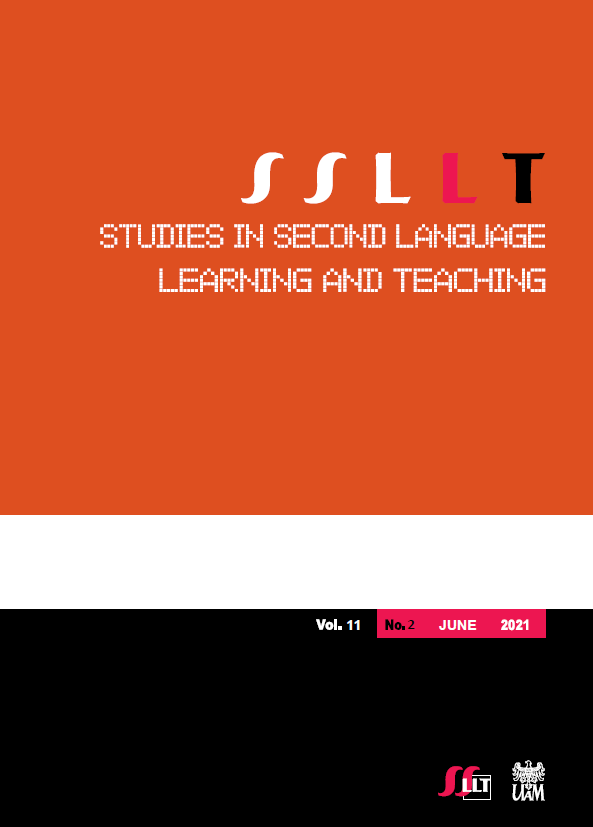How do differences in exposure affect English language learning? A comparison of teenagers in two learning environments
How do differences in exposure affect English language learning? A comparison of teenagers in two learning environments
Author(s): Carmen Muñoz, Teresa CadiernoSubject(s): Language and Literature Studies, Foreign languages learning
Published by: Wojskowe Biuro Historyczne im. gen. broni Kazimierza Sosnkowskiego
Keywords: out-of-school input; in-school input; linguistic distance; adolescents; subtitles
Summary/Abstract: This study investigates whether potential differences in the weight of out-of-school and in-school learning environments affect the acquisition of L2 English by teenagers in two geographical contexts, more and less English-rich, and with less and more linguistic distance to English, respectively. Participants were two groups of 14-15-year-olds, from Denmark and Spain. Language measures included a listening comprehension test, a metalinguistic knowledge test, and a grammaticality judgment test. Data about out-of-classroom exposure was elicited via a questionnaire. The study showed that (a) the Danish group attained a significantly higher level in all language tests except for the metalinguistic knowledge test; (b) the Danish group engaged longer in out-of-school activities although the preference for some activities over others was similar in the two groups; and (c) the types of associations between out-of-school activities and language measures were different between the two groups. These results suggest that the potential influence of out-of-school activities on different language aspects is related to the particular context in which the L2 is learned and to the language proficiency of the learner.
Journal: Studies in Second Language Learning and Teaching
- Issue Year: 11/2021
- Issue No: 2
- Page Range: 185-212
- Page Count: 28
- Language: English

